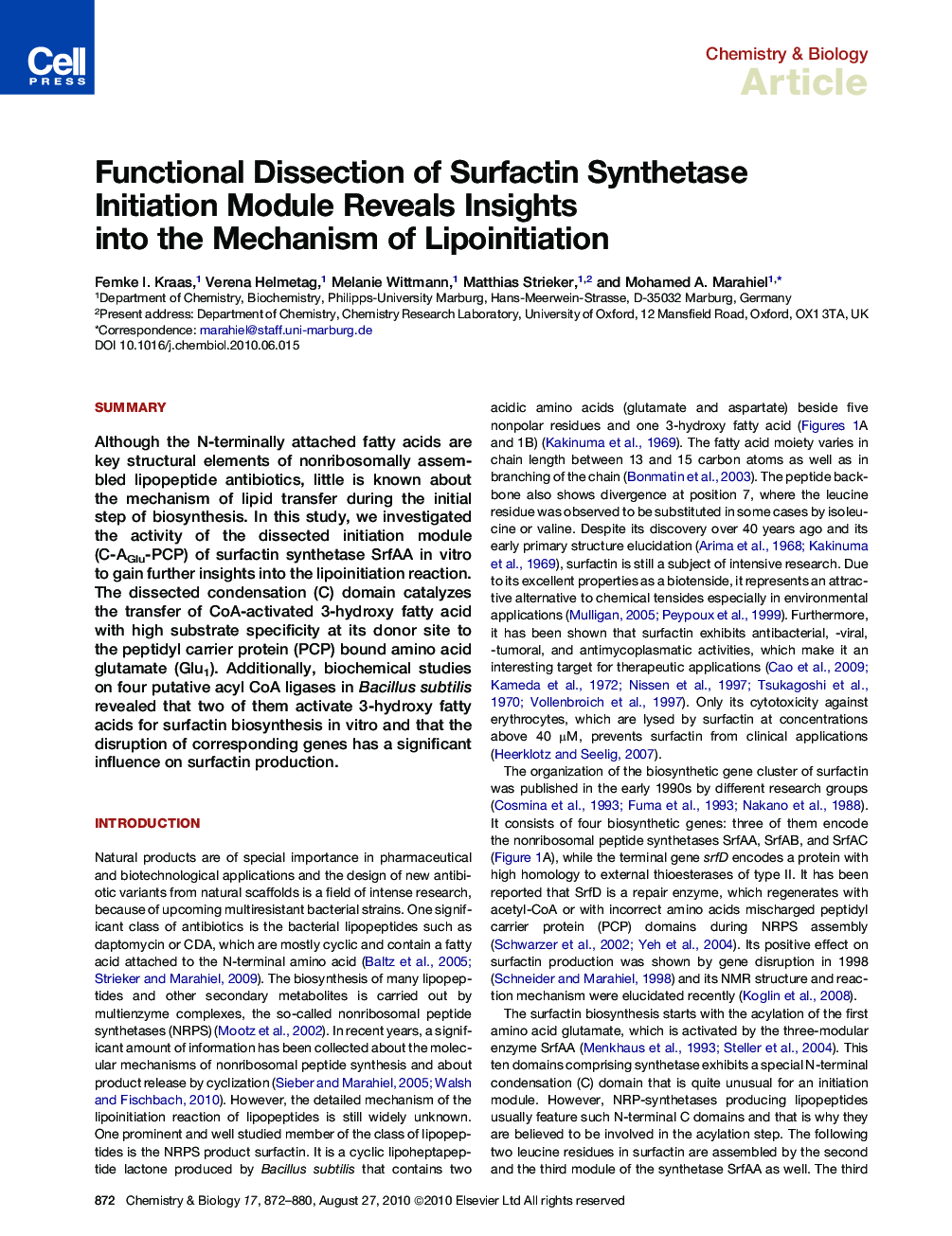| Article ID | Journal | Published Year | Pages | File Type |
|---|---|---|---|---|
| 1392401 | Chemistry & Biology | 2010 | 9 Pages |
SummaryAlthough the N-terminally attached fatty acids are key structural elements of nonribosomally assembled lipopeptide antibiotics, little is known about the mechanism of lipid transfer during the initial step of biosynthesis. In this study, we investigated the activity of the dissected initiation module (C-AGlu-PCP) of surfactin synthetase SrfAA in vitro to gain further insights into the lipoinitiation reaction. The dissected condensation (C) domain catalyzes the transfer of CoA-activated 3-hydroxy fatty acid with high substrate specificity at its donor site to the peptidyl carrier protein (PCP) bound amino acid glutamate (Glu1). Additionally, biochemical studies on four putative acyl CoA ligases in Bacillus subtilis revealed that two of them activate 3-hydroxy fatty acids for surfactin biosynthesis in vitro and that the disruption of corresponding genes has a significant influence on surfactin production.
Graphical AbstractFigure optionsDownload full-size imageDownload high-quality image (137 K)Download as PowerPoint slideHighlights► In vitro studies of lipoinitiation reaction of lipopeptide surfactin biosynthesis ► Identification of enzymes involved in fatty acid activation and coupling ► Activity of a dissected initiation condensation domain of a nonribosomal peptide synthetase ► Gene disruption studies of fatty acyl CoA ligases in Bacillus subtilis
